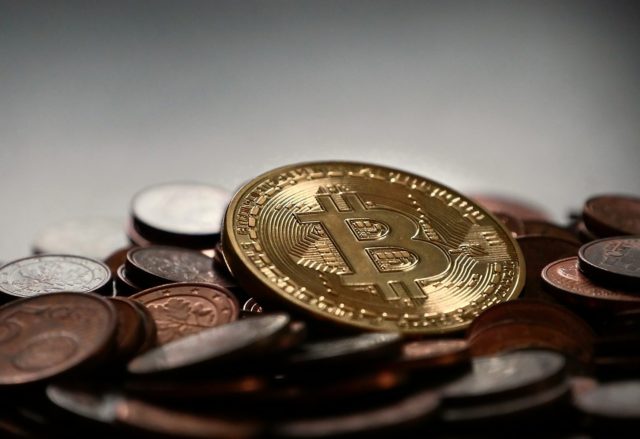by Contributing Author
If you’re wondering, “How Does Bitcoin mining work?” you’ve come to the right place. In this article, we’ll explore Proof-of-Work, the Hash algorithm, and rewards and costs for miners. We’ll also cover how new miners can start earning money and how to get started.
Proof-of-work
In Bitcoin mining, the Proof-of-Work (PoW) algorithm is critical to its security and unforgeability. The current bitcoin mining method is based on specially built computers known as ASICs that convert real-world energy into digital currency through platforms like OKX. However, this method can be inefficient and is not recommended for small-scale miners.
Will you offer us a hand? Every gift, regardless of size, fuels our future.
Your critical contribution enables us to maintain our independence from shareholders or wealthy owners, allowing us to keep up reporting without bias. It means we can continue to make Jewish Business News available to everyone.
You can support us for as little as $1 via PayPal at office@jewishbusinessnews.com.
Thank you.
Bitcoin mining involves solving a hash puzzle using electricity and computing power. The goal of Bitcoin mining is to solve the problem first and be the first to reach the correct hash. The process involves many iterations until a successful hash is found. The amount of computing power a miner has will determine the speed of block generation.
Bitcoin mining is a challenging task. It requires a lot of time and electricity. In some cases, transactions can take hours to verify. Moreover, Bitcoin mining involves excessive electricity consumption, which has environmental and sustainability implications. Furthermore, it is unlikely that the cryptocurrency will be widely adopted in the local community. Other forms of virtual currency, such as stablecoins pegged to fiat currencies, might see wider adoption.
Hash Algorithm
During Bitcoin mining, the hash algorithm is used to compute the Bitcoin transaction hash. This hash function takes as input the most recent not-yet-confirmed transactions. Depending on the input, the hash will be different. For example, a hash with zeroes should produce a different output than one with leading zeroes.
The miner needs to generate a nonce value less than the last block that the bitcoin network has accepted to generate a valid hash. This nonce value must be between 0 and 256 bits. A high nonce value will produce a large hash. If the miner fails to find the correct nonce value, he will have to wait until the next block.
The hash function is a highly efficient way to verify large amounts of data. For example, if Alice has a large file and needs to verify a transaction, she can compare the previous block’s hash with the current one. The hash should match if the file has stayed the same since the last verification. However, even the slightest change in the file will change almost all hash characters.
Rewards
Bitcoin mining is the process by which new bitcoins are created and added to the blockchain network. It requires using special equipment and electricity bills, but miners receive bitcoins in return. Currently, the mining rewards are halved every four years, which will reduce the amount of money miners receive.
The rewards for mining bitcoins are less lucrative than many people think. However, they do add up. In addition to the rewards, Bitcoin miners get regular cryptocurrencies added to the market. This helps to ensure a steady supply of bitcoins in the market. The price of Bitcoin is affected by the number of people mining it.
In the early stages of bitcoin adoption, miners made huge profits from mining. The initial equipment and electricity costs were meager. This allowed the miners to compete against other individuals using their home computers.
Costs to Miners
There are numerous costs associated with bitcoin mining. For one thing, it consumes a lot of energy. Given the energy shortage in many countries, this can be prohibitively expensive. Another cost is social. This is an area where bitcoin mining has become popular and profitable, but there are social costs, too.
The energy cost for mining Bitcoin is measured in J/Th, and hashing speed is measured in Th/s. Bitcoin mining energy cost is estimated using the best machine available. As a result, different machines may have different power settings. Nonetheless, the most efficient power setting is used in the calculation.
Costs of Bitcoin mining vary by the amount of transaction volume. Although the ratio between mining costs and daily transactions does not increase significantly, it is inversely correlated. The first decile demonstrates a negative relationship, while the tenth decile shows a positive correlation.
Impact on Price
The impact of Bitcoin mining on price is a complicated one. Not only do miners incur significant upfront costs, but they also have to pay for electricity. One ASIC miner can consume as much electricity as half a million PlayStation 3 devices. So, it is still being determined if Bitcoin mining is profitable.
China has become the most popular location for Bitcoin mining, with more than 65 percent of the world’s mining power. Miners in China took advantage of cheap electricity from coal and hydropower power plants. However, Chinese authorities cracked down on cryptocurrency mining in 2018, partly due to the risks associated with the industry and partly due to concerns about the energy used. China aims to become carbon neutral by 2060, so it doesn’t want more people to use their electricity to mine. As a result, many Chinese bitcoin miners are moving their operations to Kazakhstan, while states in the U.S. are also trying to attract Chinese bitcoin miners to their regions.
The number of electricity miners used to mine Bitcoin has been increasing over the past ten years. Daily transactions have increased from around one hundred thousand dollars in 2010 to nearly one billion dollars by 2020. The cost of mining Bitcoin is estimated through Equation (4). The cost of electricity for mining a bitcoin is roughly equivalent to one percent of the total volume of transactions.




